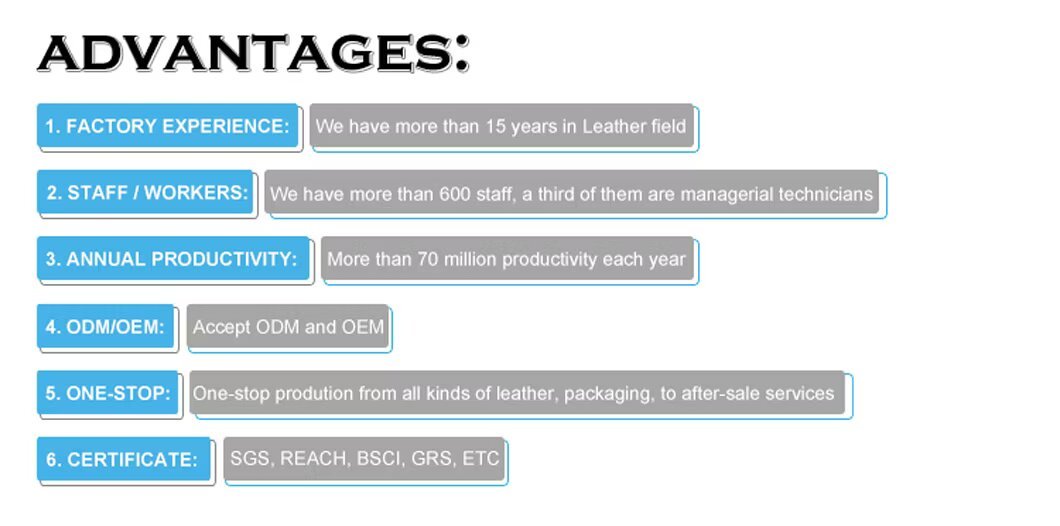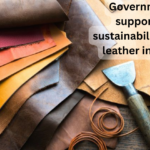Synthetic leather, often referred to as faux leather or vegan leather, offers several advantages over genuine leather in terms of cost, maintenance, sustainability, and versatility. Here’s a detailed breakdown of the key advantages:
1. Cost-Effectiveness
- Lower Production Cost: Synthetic leather is less expensive to produce than genuine leather, as it doesn’t require animal hides or labor-intensive tanning processes.
- Affordable Products: Synthetic leather products are typically more budget-friendly, making them accessible to a wider range of consumers.
2. Durability and Maintenance
- Water Resistance:
- Synthetic leather is inherently more water-resistant than untreated genuine leather, making it suitable for wet or humid conditions.
- It resists water stains and does not require waterproofing treatments.
- Stain Resistance:
- Its non-porous surface repels dirt and stains, making it easier to clean and maintain.
- Low Maintenance:
- Requires minimal care compared to genuine leather, which needs regular conditioning to maintain softness and prevent cracking.
- Resistance to Cracking:
- Does not crack or dry out as easily as genuine leather, especially in dry or hot environments.
3. Variety in Design and Colors
- Wide Range of Finishes:
- Synthetic leather can be manufactured in various textures, colors, and patterns, including metallic, glossy, and matte finishes.
- Customization:
- Easier to emboss or print on synthetic leather, allowing for intricate designs, logos, or unique patterns.
- Consistency:
- Offers uniform appearance and texture across all products, whereas genuine leather may show natural imperfections.
4. Sustainability and Ethical Considerations
- Cruelty-Free:
- Synthetic leather does not involve the use of animal hides, appealing to vegan and ethically conscious consumers.
- Eco-Friendly Options:
- Modern synthetic leathers are increasingly made using bio-based or recycled materials, reducing their environmental footprint compared to the traditional leather tanning process, which often uses toxic chemicals.
- Energy and Resource Efficiency:
- Producing synthetic leather consumes fewer natural resources than raising livestock for hides.
5. Versatility
- Weather Resistance:
- Performs better in extreme weather conditions, such as heavy rain or snow, compared to untreated genuine leather.
- Lightweight:
- Often lighter than genuine leather, making it ideal for applications like bags, clothing, and accessories.
- Applications:
- Widely used in industries ranging from fashion to automotive, furniture, and more, due to its adaptability.
6. Availability
- No Supply Constraints:
- Synthetic leather can be produced in unlimited quantities, unlike genuine leather, which depends on the availability of animal hides.
- Consistent Quality:
- Manufacturing processes ensure consistent quality, texture, and thickness across batches.
7. Resistance to Fading
- UV Resistance:
- High-quality synthetic leather can be treated to resist UV damage, making it suitable for outdoor furniture and automotive interiors.
- Color Retention:
- Retains color longer than untreated genuine leather, which can fade with prolonged exposure to sunlight.
8. Customization and Innovation
- Advanced Technologies:
- Innovations in synthetic leather (e.g., microfiber, bio-based materials) make it increasingly realistic and closer in texture and durability to genuine leather.
- Fire Retardant Options:
- Synthetic leather can be manufactured with fire-resistant properties, making it safer for certain applications.
9. Resistance to Allergens
- Non-Porous Surface:
- Synthetic leather’s smooth, non-porous surface is less likely to harbor allergens, such as dust mites or mold, compared to genuine leather.
10. Weight
- Lighter Material:
- Synthetic leather is generally lighter than genuine leather, which can improve comfort and reduce shipping costs for products like furniture or luggage.
Summary Table
| Feature | Synthetic Leather | Genuine Leather |
| Cost | More affordable | Expensive due to labor-intensive processes |
| Durability | Water and stain-resistant; less cracking | Long-lasting but requires maintenance |
| Maintenance | Low maintenance | Needs regular conditioning and care |
| Customization | Available in diverse colors, textures | Limited to natural leather properties |
| Ethics | Vegan and cruelty-free | Involves animal hides |
| Eco-Friendliness | Bio-based and recycled options improving | Tanning process can harm the environment |
| Weather Resistance | Better in wet and humid conditions | Susceptible to water damage unless treated |
| Weight | Lightweight | Heavier |
When to Choose Synthetic Leather
- If you’re looking for affordable, low-maintenance, and versatile products.
- If ethical concerns or a vegan lifestyle guide your choices.
- For applications requiring weather resistance, such as outdoor furniture or automotive interiors.
- If you prefer modern designs and colors that aren’t naturally available in genuine leather.
Synthetic leather is an excellent alternative for those seeking style, functionality, and ethical solutions without the higher cost or maintenance demands of genuine leather.
Hashtags
#SyntheticVsGenuineLeather #FauxLeatherBenefits #SustainableLeatherAlternatives #VeganLeatherAdvantages #ArtificialLeatherDurability #CostEffectiveLeather #EcoFriendlyFootwear #SyntheticLeatherPros #LeatherAlternatives #FauxLeatherInnovation














